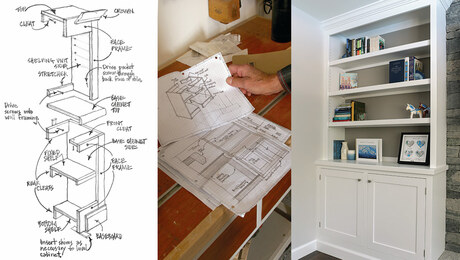*
Up till now, I’ve always used the semi-flexible corrugated copper hoses.
While gathering materials to replace my heater, I saw (at home depot) flexible plastic (with stainless steel overbraid). Seems easier to bend & install with no risk of kinking, plus it shouldn’t corrode. It seems a bigger version of the overbraided flex hose you see for connecting a plumbing fixture to its shutoff valve.
Anyone have experience regarding the durability & longevity of this in water heater application??
(since the water heater is indoors, the last thing I need is to come home & find my furniture floating in a lake)















Replies
*
Tom-
Got those very things on my water heater and share your concerns. So far (about two years) so good. I had some clearance problems and was having trouble getting the copper to go where I wanted it so installed the aforementioned lines.
But..... I installed a heater some time back with the standard copper lines and it got me to thinking about those lines again. Right now I'm using blind faith and just averting my eyes anytime I walk past the heater (with the flexible plastic lines).
*My sister had TWO of those currogated Cu lines burst, each time with the flooded basement. Sure hate to be on vacation when that happens!I installed my heater with the braided lines you mention. It is interesting that every trade person who comes in to my basement commments on them. Mainly to express how they don't trust flex lines!Now I am practicing my sweating technique and plan to "properly" plumb them with copper. I figure I've got time, such things are certainly OK for several years, it is when things get to be old that I worry.Maybe if you replace them every time you replace the heater they'd be fine.Now that we've brought up the subject, what about those braided lines for sinks and toilets? I found some old PVC ones that looked real brittle. Feel better now that I've replaced them with new ones. Does anyone really know the life expectancy of flex lines vs. Cu pipes?I guess the issue increases in importance with diameter. Like, the little 3/8" lines for your bathroom sink can only let something like 7cuft/min (if I remember correctly), but a 1" line (like at your water heater) can flow 50cuft/min. Now, I don't want ANY cuft of water coming out of my bathroom vanity cabinet, but the damage is less frightening and easier to ballance against working with all hard plumbing under a sink or toilet vs. around a water heater (which should have lots of room).
*unfortunately, in a potential earthquake hazard zone (Calif), rigid piping is not a good idea - if not outright forbidden by code. Gas & Water lines to a water heater, have to be somewhat flexible, even though the heater is already attached to the wall. The water heater location in my home (indoor closet) was an afterthought.
*Are these the same kind of stainless steel over-braided hoses used for washing machines? Hasn't the insurance industry has been pushing for these for years? I believe I read that the largest single cause of water damage in the home is from failed (burst) connecting hoses to the washer. The stainless steel braided hoses are supposed to all but eliminate failures. At the very least, when they do fail it's going to be minor spritz rather than catostrophic gusher (assuming you notice).
*In an emergency in some rental property I used 3/4 inch flexible pipe ( the kind they sell for gas line hook up). The "emergency" fix gave no problems for five years and was still working fine when I sold the home. Seems I remember that the pressure rating on these lines far exceeded the city water pressure.
*I just replaced a gas water heater with another and replaced the sweated solder copper with the flexible copper hook-ups that Home Depot sells just for hot water heaters. It was 1/10th the trouble of the solder jobs and they look like they will last forever!